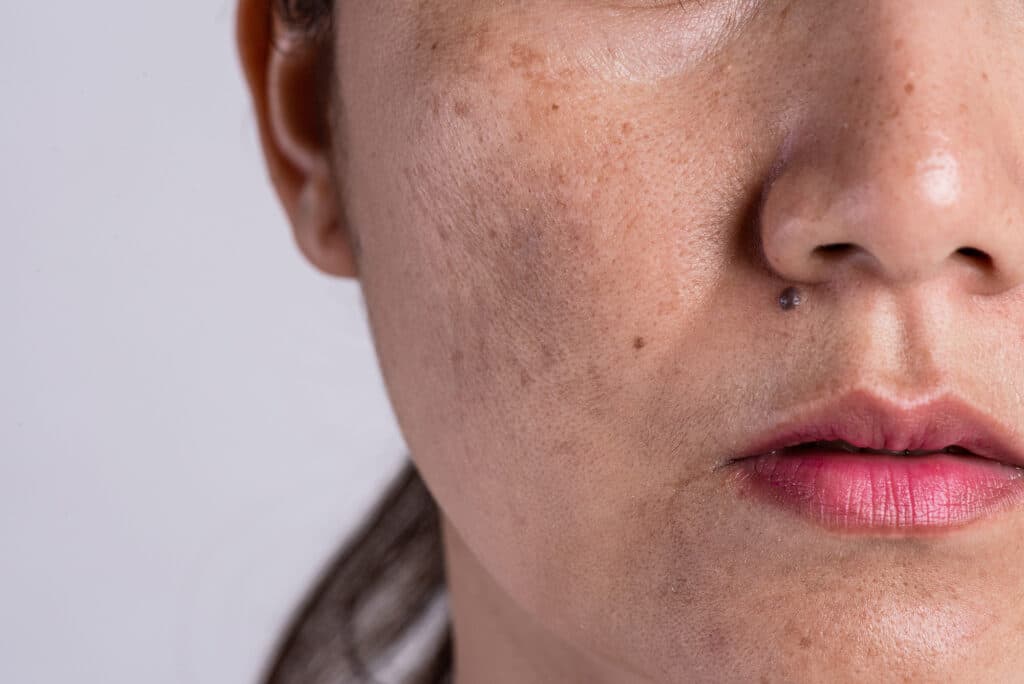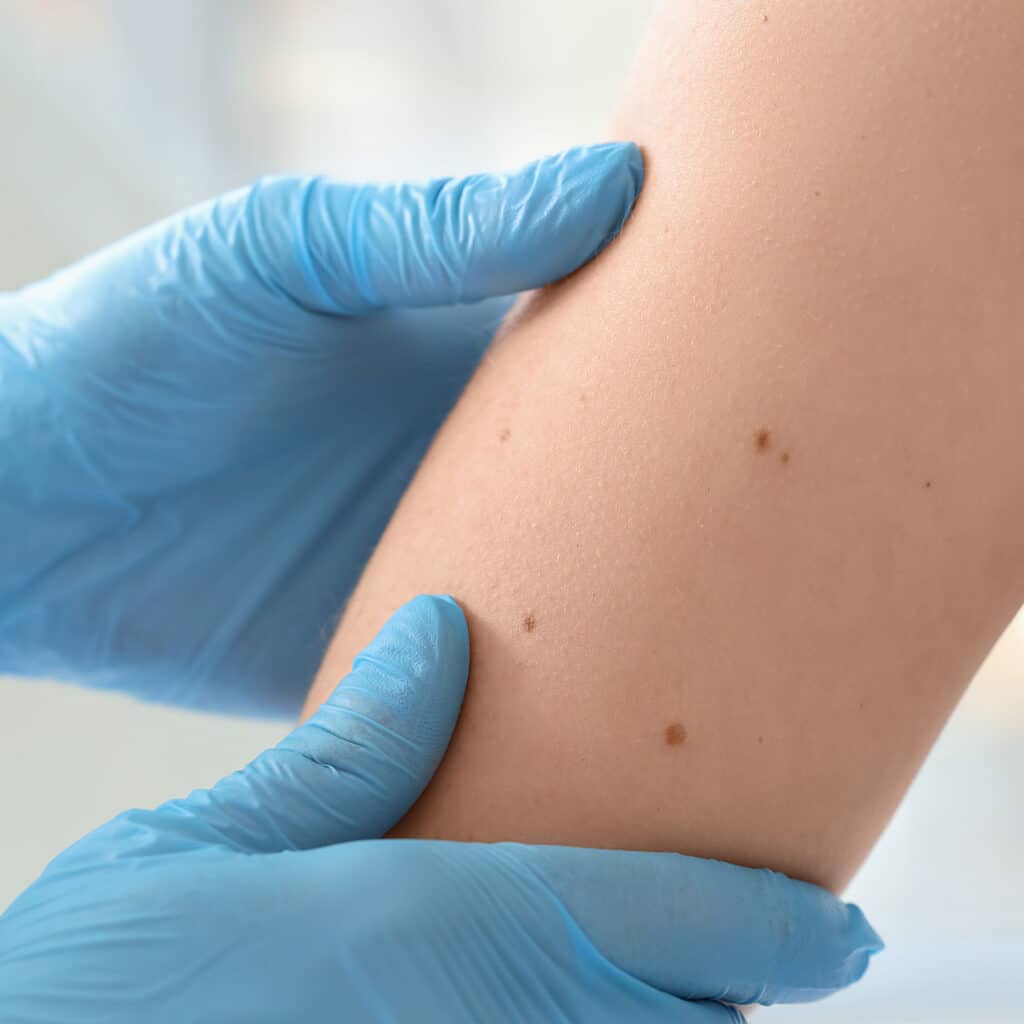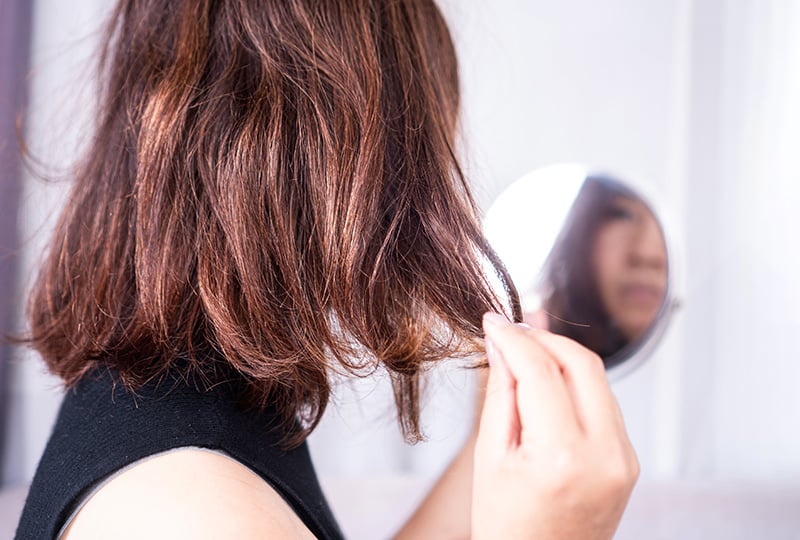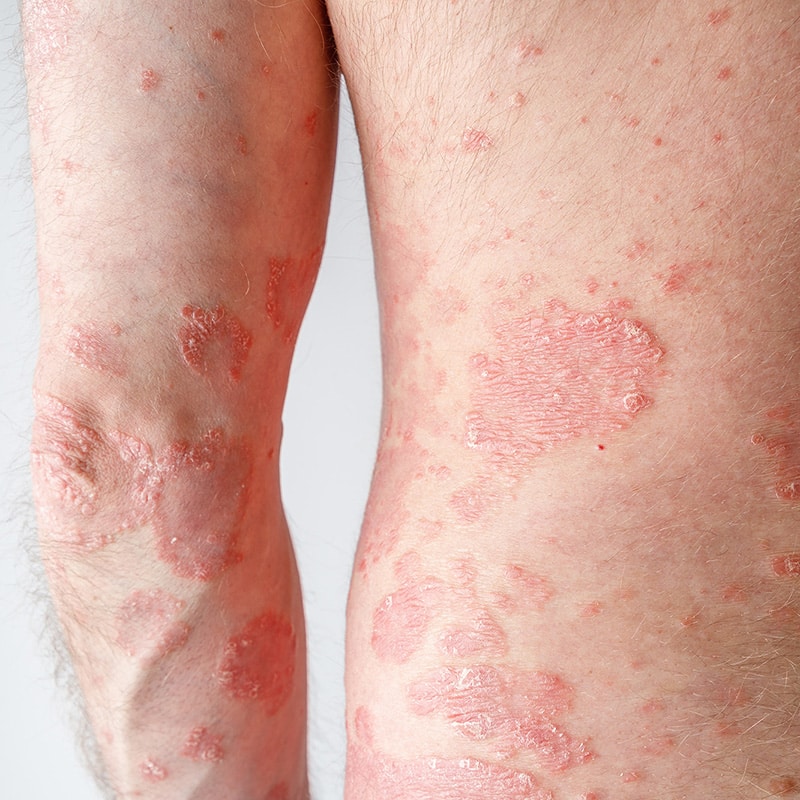Medical
Hair
Alopecia, the medical term for hair loss, is a common condition that can affect people of all ages. It involves the loss of hair from the scalp or other parts of the body such as the eyebrows, eyelashes, beard, or body hair. Hair loss can be temporary or permanent, and the causes vary widely. In some cases, hair loss is hereditary and runs in families (male/female pattern hair loss or androgenetic alopecia). Hormonal changes, such as those that occur during pregnancy, menopause, or with thyroid issues, can also trigger hair loss. Certain hair grooming practices like tight hairstyles that pull on the hair can lead to hair loss in those areas (traction alopecia). Medical conditions such as autoimmune disorders (alopecia area, lupus), inflammation (folliculitis decalvans or dissecting cellulitis, tinea capitis) scalp infections, chemotherapies, or nutritional deficiencies may result in hair loss as well. As we age, hair loss also naturally occurs to some degree.
At L’Avenue Derm, our experts specialize in diagnosing and treating all forms of alopecia. We utilize advanced diagnostic tools including AI-powered hair and scalp analysis, clinical examinations, blood tests, and biopsies when needed to determine the specific type and underlying cause of hair loss in each patient. Based on the diagnosis, we develop personalized treatment plans combining the most effective therapies. Treatment options may include prescription medications to block hormonal causes or stimulate hair growth, technologically innovative approaches like laser treatments, ultrasound-based devices, light therapy, and supplements to correct nutritional deficiencies. For some patients, hair transplant surgery to restore lost hair may be the optimal solution. With our comprehensive diagnostic and multimodal treatment approach, L’Avenue Derm is committed to helping every patient achieve their best possible outcome for full, healthy hair.


Face
Acne is a prevalent skin condition that occurs when hair follicles become clogged with excess oil and dead skin cells, leading to the formation of pimples, blackheads, and whiteheads. When these substances plug up the hair follicle, it triggers an inflammatory response in the skin, causing redness, swelling, and discomfort around the affected area. Acne is incredibly common, affecting a staggering 85% of adolescents, and often persists well into adulthood. There are several different types of acne, including cystic and hormonal varieties, all of which can take a toll on one’s self-esteem and potentially lead to permanent scarring if left untreated. The psychological impact of acne should not be underestimated, as it has been associated with social isolation, depression, and even suicidal thoughts in severe cases. While acne most frequently appears on the face, forehead, chest, shoulders, and upper back, the good news is that effective treatments are available.
At L’Avenue Derm, our team of experts employs a multifaceted approach to treating acne, which includes the use of revolutionary laser technology to control breakouts at the source, nutritional guidance to address potential dietary triggers, and advanced modalities like chemical peels and radiofrequency devices to minimize the appearance of scars. By working with our experts to develop a personalized treatment plan, individuals struggling with acne can achieve clearer, healthier-looking skin and a renewed sense of confidence.
Rosacea is a chronic inflammatory skin disorder that primarily affects the face, causing persistent redness, flushing, visible blood vessels, and in some cases, small bumps filled with pus. The condition most often manifests on the central regions of the face, including the cheeks, nose, and chin. Rosacea tends to flare up periodically, with symptoms worsening for weeks to months before subsiding temporarily. Over time, the facial redness may become more persistent.
Tiny blood vessels on the nose and cheeks often swell and become more noticeable, resembling spider veins. Many people with rosacea also develop acne-like breakouts on their face that may contain pus. The skin may feel hot and tender in the affected areas. Ocular rosacea is also common, causing dry, irritated, swollen eyes and eyelids, with eye symptoms sometimes preceding or following the skin symptoms. While the exact cause remains unknown, rosacea likely involves a combination of genetic and environmental factors, and may be linked to an overactive immune system.
Triggers that can worsen rosacea symptoms include exposure to sunlight, emotional stress, hot weather, wind, heavy exercise, alcohol consumption, and spicy foods. Although rosacea can affect anyone, it most commonly occurs in middle-aged and older adults, especially those with fair skin. While there is no cure, At L’avenue derm, our experienced team of board-certified dermatologists and licensed nutritionists work closely with each member to develop comprehensive, personalized treatment plans for managing rosacea. By combining state-of-the-art laser therapies that target visible blood vessels and reduce inflammation with tailored dietary modifications to identify and eliminate trigger foods, we help rosacea sufferers achieve clearer, calmer and healthier skin. With our guidance and ongoing support, even those with severe rosacea can experience significant, lasting improvements and renewed self-confidence.
Melasma is a common skin condition characterized by brown or grayish-brown patches on the face, particularly the cheeks, forehead, nose, chin, and above the upper lip. While it can affect anyone, melasma is much more common in women, especially during pregnancy or in those taking birth control pills or hormone replacement therapy. Sun exposure is a major trigger, as ultraviolet radiation stimulates the pigment-producing cells in the skin called melanocytes to produce excess melanin, the pigment that gives skin its color. This is why melasma often worsens in the summer months. Genetics also play a role, with a family history of melasma increasing one’s risk of developing it. While melasma is not painful or dangerous, it can cause significant emotional distress for those affected. Treatment options aim to fade the dark patches and prevent them from getting worse.
At L’Avenue Derm, our team of skilled dermatologists will create a personalized approach combining the most advanced treatment options. This may include carefully selected topical medications to gradually fade dark spots, a series of chemical peels to strip away darkened skin layers and promote cell turnover, state-of-the-art laser therapies to precisely target pigmented areas, and practical dietary and lifestyle recommendations to prevent UV exposure and hormonal triggers from worsening your Melasma. With diligent care and our expert guidance, our multifaceted treatment strategies can significantly minimize the appearance of Melasma, even out your skin tone, and help you maintain your results longterm for a clear, radiant and more confident complexion.
Body
A skin cancer screening is a thorough visual examination of your entire skin surface by a board-certified dermatologist to check for any suspicious moles, lesions, or other abnormalities that could be cancerous or precancerous. The American Academy of Dermatology (AAD) recommends this exam at least once a year for everyone. During the screening, which takes about 15 minutes, the dermatologist will carefully inspect your skin from head to toe, using a special magnifying lens called a dermatoscope to get a closer look at any areas of concern.
No blood tests or invasive procedures are involved. It’s important to have your skin checked regularly, as skin cancer is incredibly common, affecting 1 in 5 Americans at some point in their lives. While fair-skinned people are at highest risk, skin cancer affects people of all skin tones and ethnicities.
To prepare for your screening, be sure to remove any nail polish, wear your hair loose so the scalp is accessible, and arrive with a clean, bare face without lipstick (or please be prepared to wash your face at the office). Let your dermatologist and/or assistant know if you have any particular concerns about certain areas, such as your genitals, anus, mouth, lips, eyelids, nose, ears, scalp, or fingernails, so they can be sure to check those spots carefully. With early detection and treatment, skin cancer is highly curable, please don’t put off this potentially life-saving exam.
Actinic keratosis is a common skin condition caused by long-term exposure to ultraviolet (UV) radiation from the sun or indoor tanning beds. It affects millions of people, especially those with fair skin, light hair, and blue, green, or gray eyes. Actinic keratoses usually appear as rough, scaly patches or bumps on sun-exposed areas of the skin such as the face, lips, ears, scalp, shoulders, neck, and the backs of the hands. These patches can be light or dark, tan, pink, red, or the same color as your skin. They often have a dry, rough texture and may feel itchy or sensitive. While actinic keratosis is not skin cancer itself, it’s considered a precancerous condition (pre-skin cancer) because if left untreated, it can slowly develop into squamous cell carcinoma, the second most common form of skin cancer.
That’s why it’s important to identify actinic keratoses early and treat them promptly before they have a chance to progress. The most effective way to prevent actinic keratosis is to protect your skin from harmful UV rays year-round. This means applying a broad-spectrum sunscreen with an SPF of at least 30 every day, wearing protective clothing such as long-sleeved shirts, wide-brimmed hats, and sunglasses, and seeking shade during the sun’s peak hours.
Effective treatments for actinic keratosis include cryotherapy (freezing), topical chemotherapy, photodynamic therapy, and laser treatments. At L’Avenue Derm, our experts will create a personalized treatment plan to effectively target these lesions, helping to not only improve skin’s appearance but more importantly lower the risk of skin cancer development. With the right combination of prevention, early detection, and prompt treatment, you can keep your skin healthy and significantly reduce your risk of developing skin cancer.
Skin cancer is the most common type of cancer in the United States, with millions of cases diagnosed each year. Fortunately, there are steps you can take to significantly lower your risk of developing skin cancer. Protecting your skin from the sun’s harmful ultraviolet (UV) rays is crucial. This means wearing protective clothing, hats and sunglasses when outdoors, seeking shade during peak sun hours, and applying a broad-spectrum sunscreen with an SPF of at least 30 every day. It’s also wise to completely avoid artificial sources of UV exposure like tanning beds, as these can greatly increase skin cancer risk.
At L’Avenue Derm, our experts offer advanced treatments that may further reduce risk, especially for squamous cell carcinoma. These can include supplements and laser therapy as part of an individualized approach.
The three most common kinds of skin cancer are basal cell carcinoma, squamous cell carcinoma, and melanoma.
Basal cell carcinoma, the most common form of skin cancer, often appears as a flesh-toned, round growth or pearly bump, commonly on the head, neck and arms after repeated sun exposure.
Squamous cell carcinoma frequently looks like a firm red bump, scaly patch, or a sore that heals but then returns.
Melanoma, the deadliest form of skin cancer, often develops as a new dark spot on the skin or from an existing mole.
With all types of skin cancer, early detection through self-exams and prompt treatment is absolutely essential to prevent the cancer from growing deeper into the skin and spreading to other parts of the body. Treatment depends on the location of these skin cancers and varies from topical chemotherapy, to excision to Mohs surgery.
At L’Avenue Derm, our team of experts employs a multifaceted approach to treating acne, which includes the use of revolutionary laser technology to control breakouts at the source, nutritional guidance to address potential dietary triggers, and advanced modalities like chemical peels and radiofrequency devices to minimize the appearance of scars. By working with our experts to develop a personalized treatment plan, individuals struggling with acne can achieve clearer, healthier-looking skin and a renewed sense of confidence.
Sweating is the body’s natural way of regulating its temperature and cooling itself down. However, some people suffer from a condition called hyperhidrosis, which causes them to sweat excessively, often unrelated to heat or physical activity. People with hyperhidrosis sweat excessively even without these triggers. While people with hyperhidrosis don’t actually have more sweat glands than others, their sympathetic nerve, which controls sweating, is overly sensitive and triggers the sweat glands to produce much more perspiration than normal. Symptoms of hyperhidrosis depend on the affected area of the body, but commonly include profuse sweating on the palms, hands, underarms, face, and trunk. Some people may also experience severe facial flushing. The excessive sweating usually occurs symmetrically on both sides of the body. This condition can be very disruptive to daily life and cause significant social anxiety and embarrassment for those who suffer from it. Fortunately, effective treatments are available. At L’Avenue Derm, experienced dermatologists develop personalized treatment plans that may involve improving self-care habits, using conventional treatments, or administering botulinum toxin (Botox) injections to block the nerves that activate the sweat glands.





